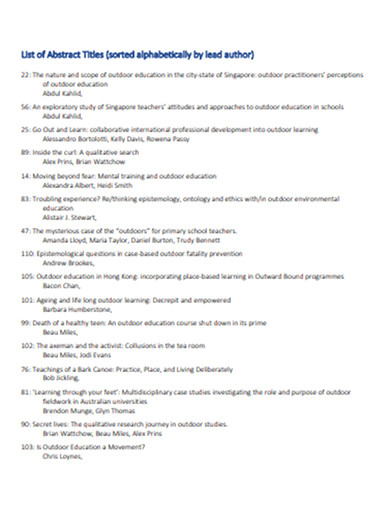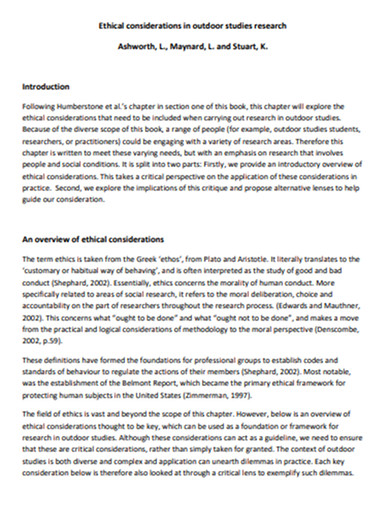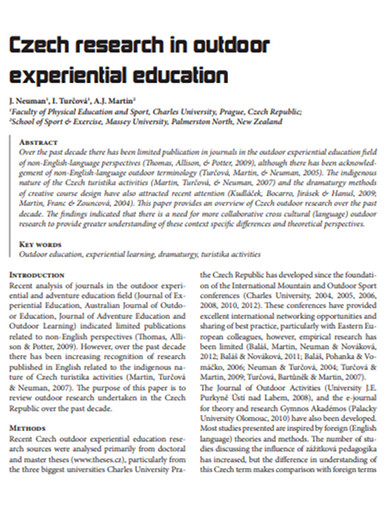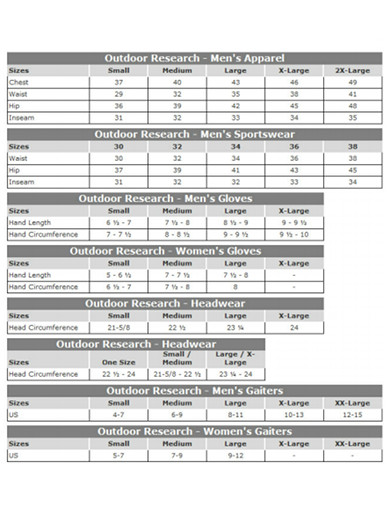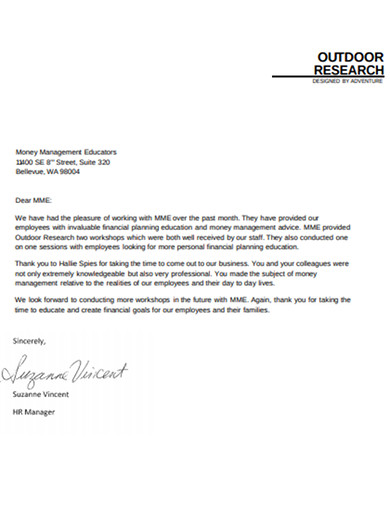6+ Outdoor Research Examples
Coral reefs are teeming with a wide spectrum of underwater life forms, from small zooxanthellae to colorful fishes and crustaceans. However, rising global temperature has left a large fraction of these living palaces that took 10,000 years to form dead. We are losing much of our biodiversity to the climate crisis at an accelerated rate. Outdoor researchers and environmental scientists have a pivotal role in saving the remaining species from the brink of extinction.
=
Outdoor research is an approach under natural or field research in the environmental sciences. It investigates the interactions between organisms and their relationships with abiotic influences within different ecosystems. Unlike field research, controlled experiments will always be artificial and removed from the natural context. Reliable, replicable data is its selling point, particularly in the exact sciences. However, field experiments are far from works of fiction. Where laboratory experiments fail in replicating the exact conditions in which the topic of the thesis exists, field experiments thrive.
Validity of Field Research
Corals are living organisms. They are colonies of small sac-like animals called polyps coexisting with the algae zooxanthellae that give corals distinct colors. Coral polyps house the algae while the latter provides food for the polyps. Once corals experience thermal stress, like an abnormal rise or fall in temperature, the algae leave the polyps. The white skeletal remains left from the coral reef bleaching are the calcium carbonate deposits that take thousands of years to form.
According to scientific literature, the first recorded mass coral bleaching was observed from the Belize Barrier Reef when the on-site temperature rose to as much as 4°C. While parts of the area showed signs of recovery, much of the coral populations was irreversibly lost. As sponges started to spread in the area, coral polyps may have less space to grow and recover.
These events that occur in nature, from the symbiosis of corals and algae to the effects of abrupt global warming, are proof that controlled experiments and exact sciences cannot capture the intricacies of nature and life. The interactions in the wild cannot be replicated in the laboratory unless we replicate every quantum particle of that reality.
Because science has to remain impartial and free of unnecessary—worse, harmful—subjectivity, we follow the scientific research method and employ statistical analyses. This will increase our confidence in the field data and measure its validity using definite and objective criteria. Although the valid findings of one study may not be representative of every population, different studies that support the same conclusion strengthen its validity.
Future of Outdoor Research
We are in a race against time in mitigating the ill effects of the climate crisis. When we know more about our environment, we can devise better and more effective solutions. The observations and findings that we obtain from every chapter of field research studies and the reviews of related literature are necessary in understanding the world around us. These data illustrate the interaction of life forms with each other and with the environment. With environmental issues ranging from pollution, biodiversity loss, to global warming, we need more outdoor research papers and field researchers.
6+ Outdoor Research Examples
The following are examples of outdoor research that you might find useful.
1. Outdoor Education Research Example
2. Ethical Considerations in Outdoor Studies Research
3. Outdoor Fitness Research Example
4. Research in Outdoor Experiential Education Example
5. Sample Outdoor Research Example
6. Basic Outdoor Research Example
7. Outdoor Research Letter Example
Conducting Outdoor Research
In performing field studies, what are the things that you should keep to heart?
1. Observation Method
You can conduct direct or participant observation. Most environmental field experiments use the former. In direct observation, the researcher is another entity completely removed from the ecosystem. You are just there to record observations. You shouldn’t make significant interference with the environment, depending on what you’re studying. The general rule is to leave no trace. Some studies benefit from participant observation. Here, the researcher is involved and interacting with the subjects of the investigation. One example might come to mind: Jane Goodall and her research on the behavior of chimps.
2. Study Location
Men and women of science aren’t exempt from danger. It’s safe to say that researchers should still think of their safety during field experiments. Choose a research site that will give you relevant data for your study. When going into foreign and unfamiliar places, it is wise to ask the help of the local government or relevant organizations of that area. You should also remember to obtain a permit to conduct a study in an area, especially if the site is considered a sanctuary. Even if the reason is solely academic. You should also select different sites within the location, when possible, to have data replicates.
3. Research Methodology
The research design and methods would be different from laboratory research. Because you are not supposed to cause extreme disturbance of the ecosystem in the area, avoid collecting excessive samples. Use less invasive procedures and equipment when you need to alter a part of the site. Fieldwork sometimes makes use of direct and indirect surveys wherein you observe and record the ecology of the area. In direct surveys, you observe the organisms themselves. In indirect surveys, you look at the effect of the organisms in the environment as a way of observing them.
4. Data Analysis
Some books on statistics glorify probability sampling as the holy grail of sampling methods for data reliability and validity. However, field research exists in non-ideal conditions that may not allow you to use random sampling. You can use non-probabilistic sampling that will still make your findings reliable. You can design statistically valid research and perform statistical tests on the data with the help of statisticians. Your data can still be generalizable when you use statistical analysis to identify your population of interest.
The findings we obtain from outdoor research are useful in our environmental conservation initiatives. Reliable outdoor research studies a society with open ears and minds will help us handle current predicaments that threaten society.



